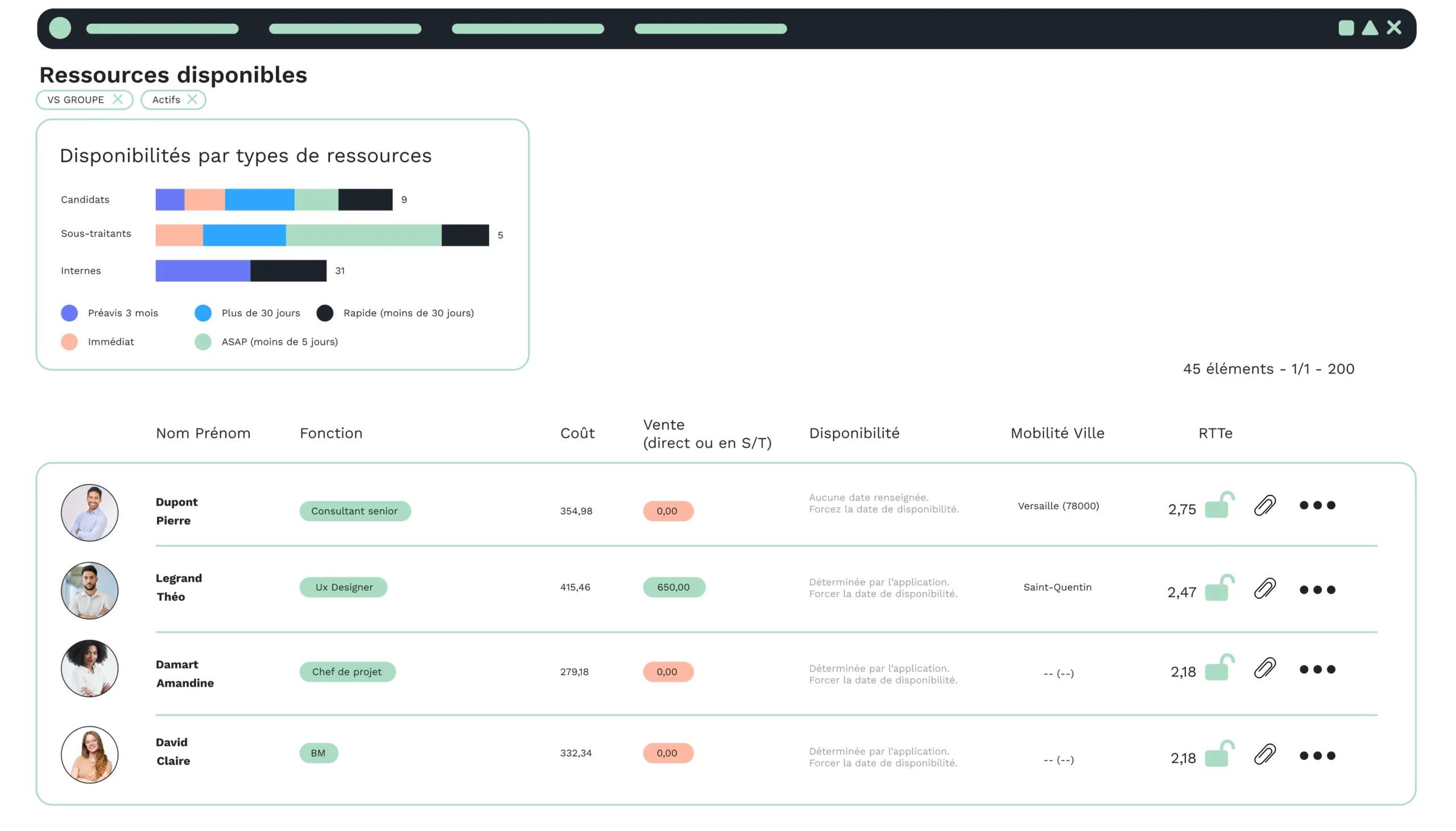As an engineering company, you’re called upon to work on a wide range of projects involving several players with complementary skills.
As your business grows, it becomes difficult to keep an overview of projects, and some tools, such as Excel, reach their limits.
As a result, your productivity and profitability suffer.
This is the moment when you start thinking about implementing a business ERP, like VSA, within your company.
How does VSA work?
VSA boasts a wealth of functions thanks to its numerous modules. These enable you to cover a large number of your company’s activities, such as HR, purchasing and sales, and to gain an overall view of your business.
In concrete terms, the modules were created to meet the business needs of an engineering company. For example, when you receive a call for tenders, you can use the CRM module to reference the opportunity and build your proposal to respond to it. Then, if the customer approves it, it becomes active business. You can monitor the project in real time: the people assigned to the project, their time spent, related costs, logistics, progress, remaining work to be done, project deadlines marked by the issue or non-issue of acceptance certificates, invoicing and financial outstandings.
Integrated BI (Business Intelligence) provides you with comprehensive reporting to help you analyze your results and make strategic decisions.
In short, VSA allows you to monitor your projects from A to Z.
What are the advantages of using VSA?
You gain in reliability because the same data entered once is reused throughout the ERP system where necessary; you minimize the risk of data entry errors and inconsistencies.
You gain in productivity because you benefit from a centralized system where your internal processes can be easily articulated, with relevant business reminders and alerts to make sure nothing is missed.
Gain greater control over your business, with real-time reporting to help you make the right decisions.
VSA is the business ERP that will enable you to optimize your processes, activities (projects, etc.), human resources and financial monitoring.







